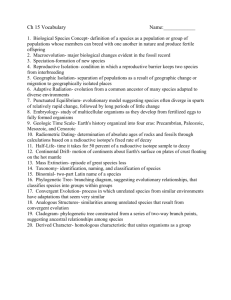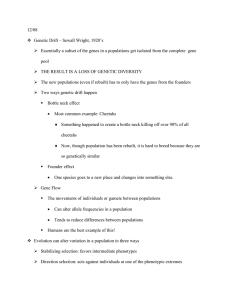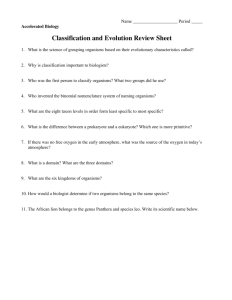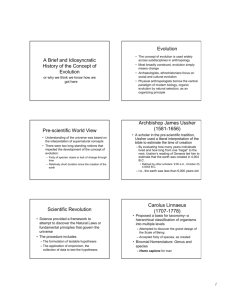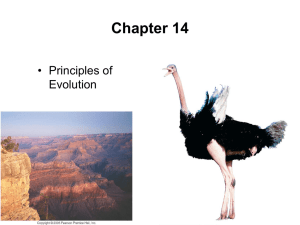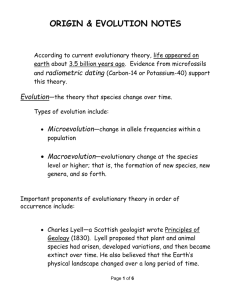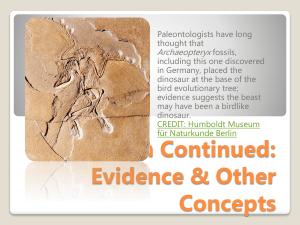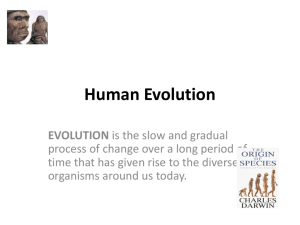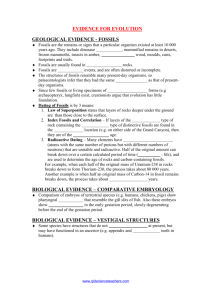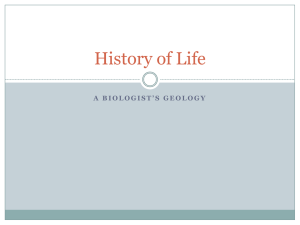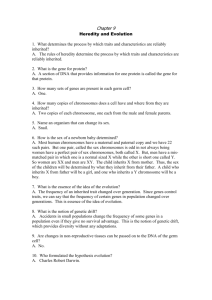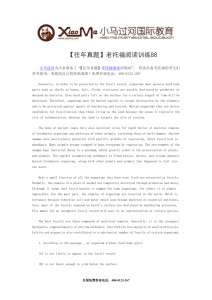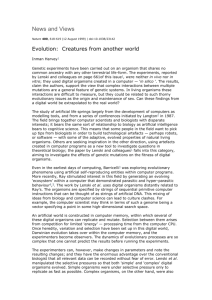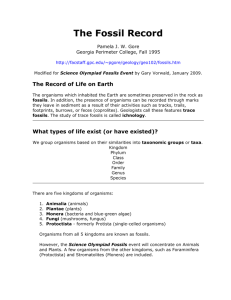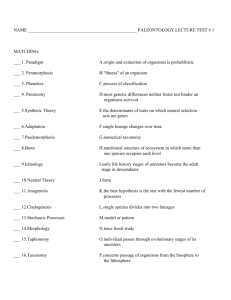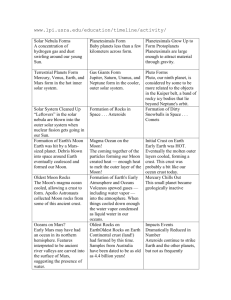Study Guide for the Mid
advertisement
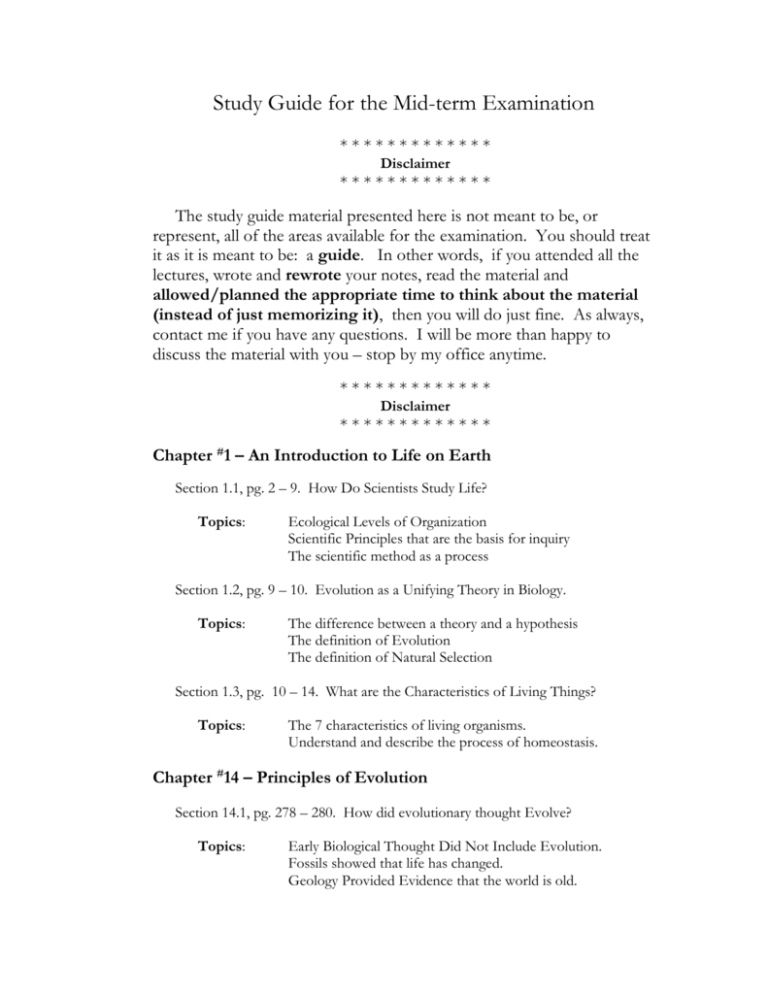
Study Guide for the Mid-term Examination ************* Disclaimer ************* The study guide material presented here is not meant to be, or represent, all of the areas available for the examination. You should treat it as it is meant to be: a guide. In other words, if you attended all the lectures, wrote and rewrote your notes, read the material and allowed/planned the appropriate time to think about the material (instead of just memorizing it), then you will do just fine. As always, contact me if you have any questions. I will be more than happy to discuss the material with you – stop by my office anytime. ************* Disclaimer ************* Chapter #1 – An Introduction to Life on Earth Section 1.1, pg. 2 – 9. How Do Scientists Study Life? Topics: Ecological Levels of Organization Scientific Principles that are the basis for inquiry The scientific method as a process Section 1.2, pg. 9 – 10. Evolution as a Unifying Theory in Biology. Topics: The difference between a theory and a hypothesis The definition of Evolution The definition of Natural Selection Section 1.3, pg. 10 – 14. What are the Characteristics of Living Things? Topics: The 7 characteristics of living organisms. Understand and describe the process of homeostasis. Chapter #14 – Principles of Evolution Section 14.1, pg. 278 – 280. How did evolutionary thought Evolve? Topics: Early Biological Thought Did Not Include Evolution. Fossils showed that life has changed. Geology Provided Evidence that the world is old. Section 14.2, pg. 282 – 286. How do we know that Evolution has occurred? Topics: Fossils provide evolutionary evidence. Comparative anatomy and descent with modification. Biochemical and Genetic analyses Section 14.3, pg. 288 – 289. How Does Natural Selection Work? Topics: Postulates #1 – 4. Natural selection modifies populations over time. Section 14.4, pg. 288 – 289. What is the Evidence? Topics: Evolution by natural selection today. Chapter #15 – How Organisms Evolve Section 15.1, pg. 296 – 297. How are Populations, Genes and Evolution Related? Topics: Genes and the environment interact to affect traits. Evolution is the change in gene frequencies over time. Section 15.2, pg. 298 – 303. What Causes Evolution? Topics: Mutations are the original sources. Hardy-Weinberg conditions. Section 15.3, pg. 305 – 306. How does Natural Selection Work? Topics: Stems from unequal reproduction. Natural Selection acts on phenotypes non-randomly. Some reproduce better than others. Chapter #16 - The Origin of Species Section 16.1, pg. 316 – 317. What is a Species? Topics: The components of the “species” concept and its definition. Section 16.2, pg. 317 – 319. How Reproductive Isolation is maintained? Topics: Pre- and Post-mating Isolating Mechanisms. Know Geological, Ecological, Behavior, Temporal, and Mechanical Isolating Mechanisms. Chapter #17 - The History of Life Section 17.1, pg. 332 – 335. How Did Life Begin? Topics: Experiments on the elements of life. The physical geography of early Earth. Section 17.2, pg. 335 – 319. How Reproductive Isolation is maintained? Topics: Prokaryotes and Eukaryotic Organisms (know the difference) Know the names and meanings of the 4 major geologic eras and the major events of each. What is a stromatolite and why is it important? What is endosymbiosis? Section 17.3, pg. 339 – 340. Early microorganisms Topics: The era in which it occurred. Section 17.4, pg. 340 – 344. Early Land Invaders Topics: What were the organisms like when they moved onto land? What eras? The films will help you. Section 17.5, pg. 344 – 346. Extinction and Continental Drift Topics: The nature of mass extinctions. Know the names of the major supercontinents and how they moved apart (and in some cases together again) and during what time eras? Chapter #18 – Seeking Order Amidst Diversity Section 18.1, pg. 358 – 360. How are Organisms Named and Classified? Topics: Know Phylogeny, Systematics and Taxonomy What is binomial nomenclature? Scientific name and common name rules Section 18.2, pg. 360 – 361. What are the Domains of Life? Section 18.3, pg. 363 – 366. The Definition of a “species” is? Section 18.4, pg. 366 – 366. How Many Species Exist? Topics: Know the number and distribution of species. Article: “Quiet Decline” - Be able to recall the important details of this article as discussed in class.

